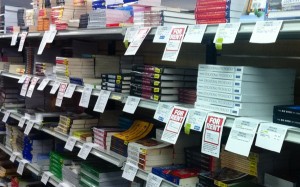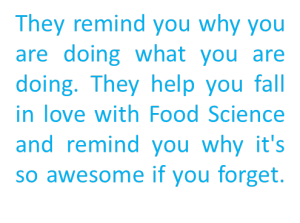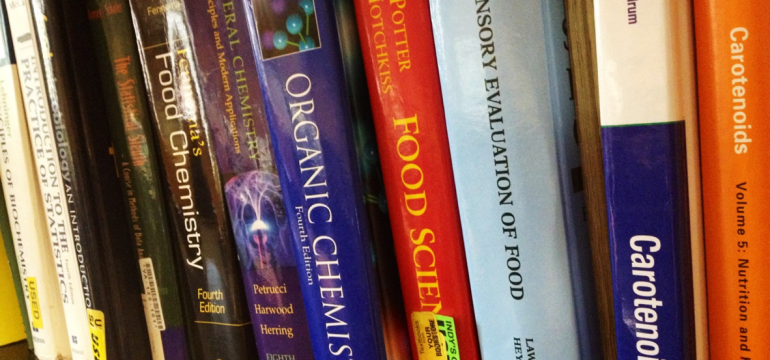By: Kristy Vest
“It’s the most wonderful time of the year!” exclaim parents as their children return to school. As a (mostly) independent university student, I can’t disagree that a good shopping trip to a stationary store with a cart full of extra thick graph paper, extra thin ink-ball pens, brightly colored highlighters, post-it notes and alligator clips is invigorating. But back to school also means…the bookstore line up.

source: middleburycampus.com
I go to campus at least a week before classes begin to be good and early. The idea is that I will be able to breeze up to the counter and engage in delightful small talk that, at this point, both the cashier and I are not too annoyed or tired to enjoy. Even my best efforts to be savvy and timely always leave me with one or two books or manuals that are out of stock. There really seems to be no excuse for this, but I digress.
It’s my second round to the bookstore that usually gets my goat. It’s not only the vast magnitude of the seemingly endless line-up that numbs me into a desensitized stupor; it’s also the neon green tally that scrolls across the screen. The cashier swings the display piece around and for a moment it’s like you’re on a game show. It spins around and around until its velocity begins to slow. The display piece ends in a half-visible angle where momentary dyslexia has you hoping the total ends and doesn’t begin in a 7 or even a 5. Students past their third years are somewhat desensitized to this, too. We are desensitized to the point that a $50 lab manual seems cheap. “Open source” textbooks laser printed in black and white for $28 are basically a steal.
Text books erase any momentary glimpse of your summer savings and all those extra hours at work. They trump new winter boots, parking passes and brand name cereals. Sadly, especially if you’re in your first or second year, you likely won’t even read them. Best intentions and a little bit of procrastination means that “assigned” reading becomes “recommended” reading and eventually “For sale! Like new! No highlighting!” advertisements. Worse yet, more and more texts are required to be purchased new versus used. This is all for whatever “low, low price” listed because it also includes the study pack, practice exams and a student access code (that you’ll need in order to submit your homework). It really is no wonder that text books remain one of the biggest points of contention for students- the thorn in our side, our Achilles heel! A vast number of professors have begun to write and collect an impressive, expansive and valuable source of notes that are accessible online. Many classes don’t list text books as required and a few don’t even list recommended titles. (Tip for free: the recommended ones in these cases are real gems! Seek them out and read them!)

In my years in the Nutrition and Food Sciences program, I have found a few text books that stick out- those few books that don’t seem to stay on your book shelf for long. They’re on your desk, couch, coffee table, in your car, etc. (They end up at your Auntie’s house?) You use them to remind yourself of the things you already learned (but maybe forgot). They put things into terms so that you can move on and expand your learning. They are a perfect source to cite; even if as a basic introduction to a concept. They have great images and diagrams. They remind you why you are doing what you are doing. They help you fall in love with Food Science and remind you why it’s so awesome if you forget.
From the thousands of dollars spent on text books over the years, I have found several text books enjoyable to read and invaluable in my learning. They very nearly make all of those games of “spin the cash register total” worth it. An example of one of my favourites is “Food: The Chemistry of its Components, 5th Edition” by Tom Coultate. This text provides a great introduction to Food Chemistry. This book brings together all of the introductory organic chemistry information we were taught while making it simple and relevant to our focus: food! It marks the beginning of my love affair with Food Science.
This brings me to my question for you: What are your favourite go-to text books from your degree in Food Science and related programs? Do you have a few gems that have become your coffee table books? Please share with us all below!






Fennema is my go-to choice!
Not sure if this counts, but I love hanging up any diagrams from my meat science class. They’re informative and (mostly) nice to look at!